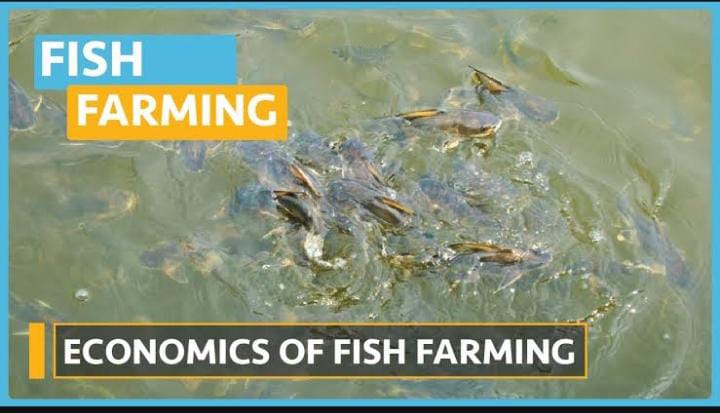08055999218
ABC of Fish Farming Economics
Fish farming economics:
The ABC of fish farming economics refers to the fundamental concepts and factors that influence the financial aspects of fish farming. Here are some key elements to consider:

1. Fish Farming Costs
1a. Fixed Costs: These are expenses that remain relatively constant regardless of the production level, such as land, infrastructure, equipment, and licenses.
1b. Variable Costs: These costs vary with the production level and include items such as feed, labor, electricity, water, chemicals, and fish health management.
1c. Operating Costs: The sum of fixed and variable costs required to run the fish farm on a day-to-day basis.
1d. Capital Costs: Expenses associated with the initial investment in infrastructure, equipment, and the development of the fish farm.
2. Revenue
2a. Fish Sales: The income generated from selling fish. It depends on factors such as market demand, fish quality, size, species, and prevailing prices.
2b. Value-Added Products: Additional revenue can be generated by processing and selling value-added fish products, such as fillets, smoked fish, or fish-based snacks.
2c. Other Revenue Streams: Income from activities like pond rental, hatchery services, training programs, or agritourism.
3. Profitability
3a. Gross Profit: The difference between total revenue and total variable costs, indicating the profit generated from fish sales alone.
3b. Net Profit: The profit after deducting all expenses, including fixed costs, from the total revenue. It represents the overall profitability of the fish farming operation.
3c. Return on Investment (ROI): The percentage return on the capital invested in the fish farm. It is calculated by dividing net profit by the initial investment and multiplying by 100.
4. Production Efficiency
4a. Feed Conversion Ratio (FCR): This is the amount of feed required to produce a unit of fish. It is obtained by dividing the total feed given by the total fish weight gain. A lower FCR indicates higher production efficiency and cost-effectiveness.
4b. Growth Rate: The rate at which fish gain weight. Faster growth rates result in shorter production cycles and higher profitability.
4c. Survival Rate: The percentage of fish that survive from stocking to harvest. Higher survival rates contribute to improved profitability.
5. Risk Management
5a. Market Risk: Fluctuations in fish prices, demand, or market conditions that can affect revenue and profitability. Diversifying markets and products can help mitigate market risks.
5b. Environmental Risk: Natural disasters, disease outbreaks, water quality issues, or climatic changes that can impact fish health and production. Implementing proper biosecurity measures and contingency plans can minimize environmental risks.
5c. Financial Risk: Challenges related to accessing capital, managing cash flow, interest rates, and inflation. Maintaining financial discipline, budgeting, and monitoring expenses can mitigate financial risks.
In conclusion, It’s important to note that fish farming economics can vary widely based on factors such as location, scale of operations, species farmed, market dynamics, and management practices. Regular financial analysis, budgeting, and continuous improvement in production efficiency are crucial to ensuring the financial sustainability and success of a fish farming enterprise.
Do you want to learn more about fish farming? Read more on our Fishery Academy page
Follow us on our social media handles: Facebook, Twitter, Instagram and TikTok
